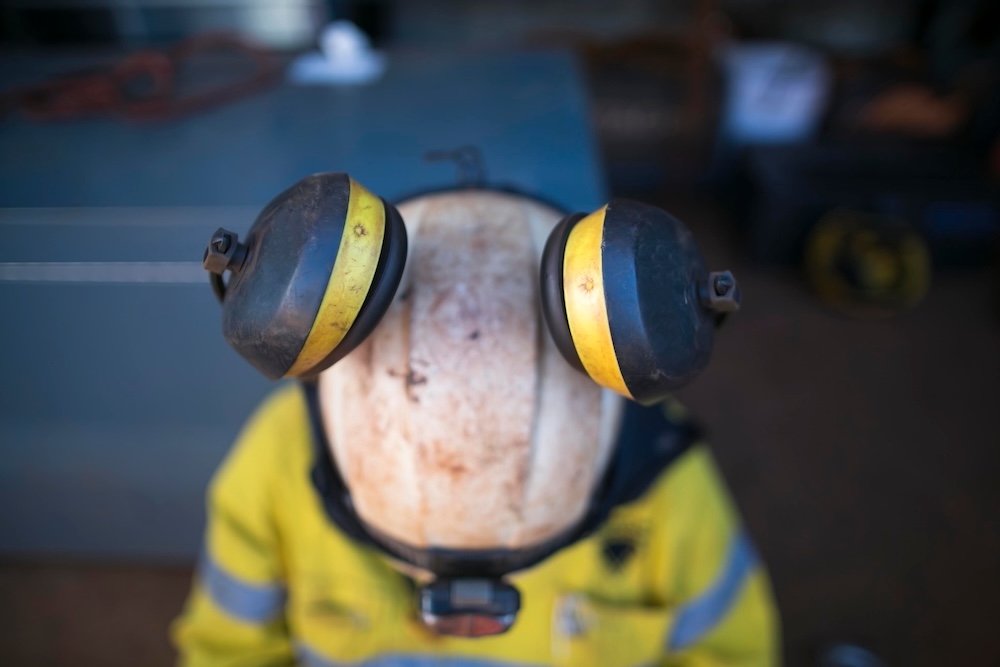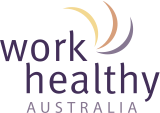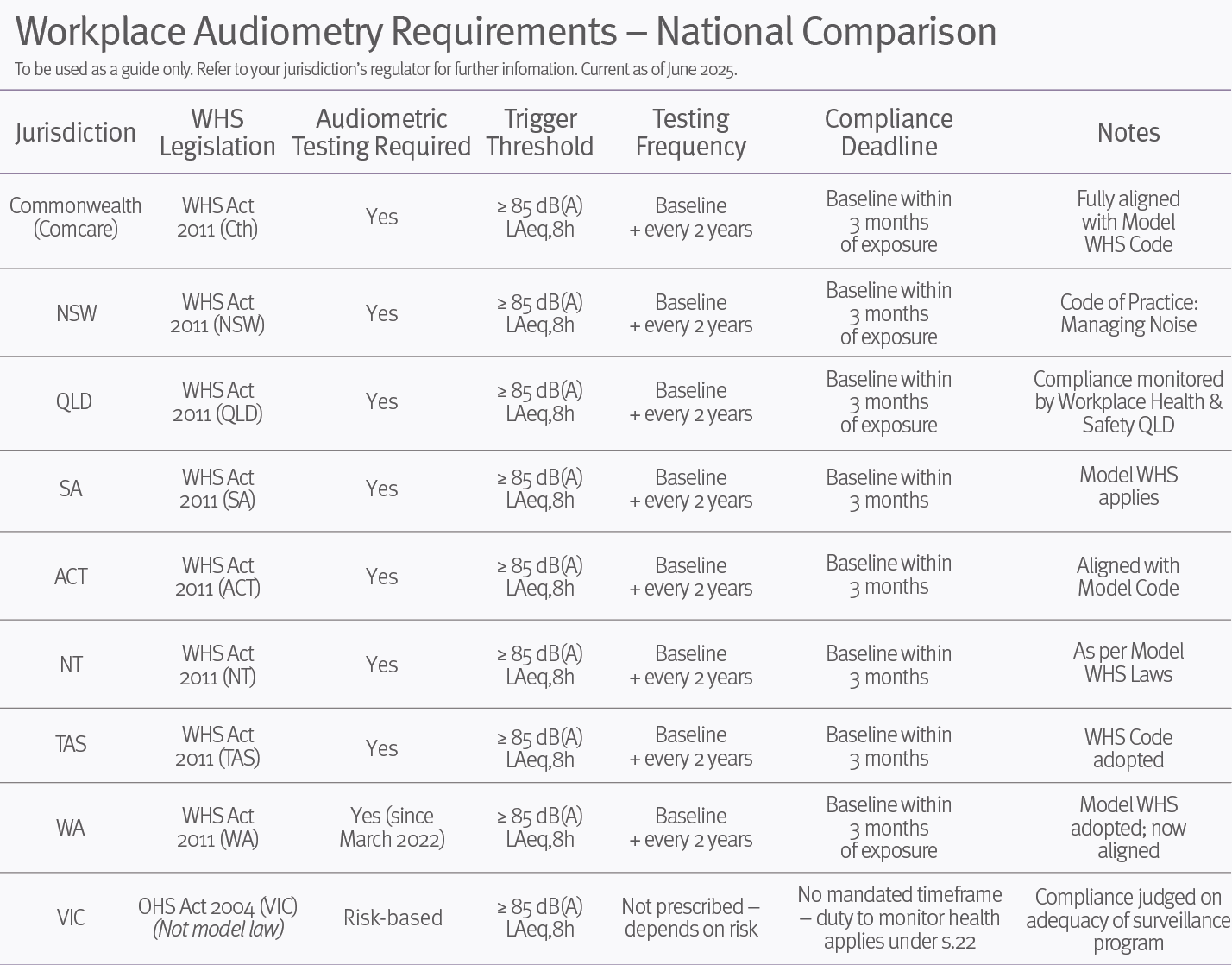
Top view of pictures of ears muffs protection attached clipping into rope access technician full protection helmet at construction site, Sydney Australia
Exposure to hazardous levels of workplace noise can cause irreversible hearing damage. As a result, employers have strict obligations under Work Health and Safety (WHS) legislation to assess and monitor worker hearing – yet many organisations remain unaware of the full scope of these requirements.
Non-compliance is not a minor oversight. It can result in enforcement action, increased injury claims, and long-term impacts on worker wellbeing. So, are you meeting your obligations?
Why audiometry matters in manual handling industries
Noise-induced hearing loss is a common and preventable occupational condition. It often develops gradually, making it difficult to detect until permanent damage has occurred. Industries such as manufacturing, logistics, construction, local councils, and processing expose workers to sustained noise levels above safe thresholds.
Audiometric testing serves as a control and monitoring measure under national WHS laws. It provides:
- Baseline data for early detection of hearing changes
- Ongoing surveillance to detect threshold shifts
- Documented evidence of risk management in high-noise environments.
These measures directly align with employers’ obligations to eliminate or minimise risks to health and safety so far as is reasonably practicable.

Understanding your legal obligations
Under the Model WHS Act 2011 and the Managing Noise and Preventing Hearing Loss at Work Code of Practice, audiometric testing is mandatory for any worker required to wear hearing protection due to noise exposure ≥85 dB(A) LAeq,8h. A baseline audiogram must be conducted within three months of commencing exposure, with follow-up testing every two years.
However, legislative application differs by jurisdiction. In Queensland, recent emphasis on compliance has seen greater regulatory attention and enforcement for businesses that fail to conduct appropriate audiometric surveillance. Victorian employers, while not subject to the model laws, still carry a general duty to monitor health where risk is identified.
Key questions for employers
To assess whether you’re meeting your obligations, consider:
- Has a site wide noise assessment been completed?
- Have actions been taken to reduce noise exposure in areas at or above the 85 dB(A) threshold?
- Are workers who require hearing protection receiving baseline testing within 3 months of commencement in the role?
- Are monitoring assessments occurring every two years, and are results reviewed for threshold shifts?
- Do you maintain comprehensive documentation and provide follow-up action where necessary?
If the answer to any of these is unclear, your business may be at risk of non-compliance.
How to address the requirements
Establishing a compliant audiometry program requires more than ad hoc testing. It demands a structured approach including:
- Initial setup and planning – Identify exposed roles, ensure correct equipment is in place, and establish a testing schedule.
- Qualified personnel – Ensure staff are trained to conduct or coordinate testing in line with legislative standards.
- Documentation and monitoring – Maintain clear records of each assessment and any required follow-up action.
- Program review – Periodically audit your system to ensure continued alignment with regulatory obligations and internal risk frameworks.
A structured pathway to compliance
Work Healthy Australia supports employers to meet their audiometric testing obligations with a two-stage service framework:
Stage 1 – Setup and Compliance Support
Tailored compliance recommendations.
Equipment coordination (audiometer, sound booth, otoscope).
Facilitation of training for nominated staff to conduct onsite testing.
Stage 2 – Documentation and Templates
Practical, jurisdiction-compliant templates to streamline reporting and tracking.
Guidance on correct document usage to support legislative and operational requirements.
This structured approach enables organisations to confidently manage occupational noise risks, while ensuring compliance is maintained efficiently and sustainably.
Audiometric compliance is not optional – it’s a legislative obligation. Whether you operate in Queensland, Victoria or any other Australian jurisdiction, it is critical to be across your responsibilities. By implementing a fit-for-purpose program, organisations can reduce legal exposure, support worker health, and build a robust safety culture. In an environment of rising enforcement, the question is not whether you should act – but whether you already are. Contacts us today to find out more about our solution for occupational audiometry.
Sign up to our monthly enewsletter
"*" indicates required fields

